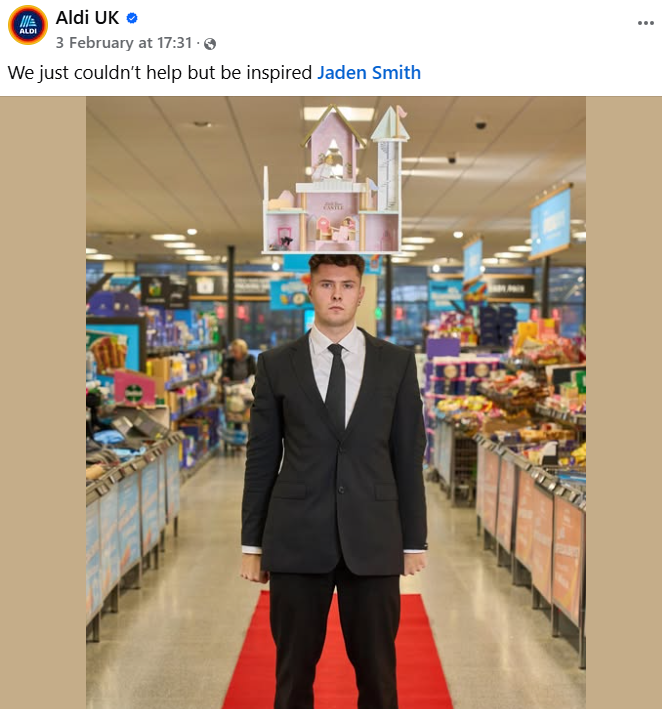
February Marketing Updates
Maximise Valentine’s Day Sales on Amazon with Optimised Listings & Strategic Ads
Valentine’s Day is one of Amazon’s biggest seasonal sales opportunities, spanning multiple categories – from gifts and beauty to gourmet treats and jewellery. To stand out in a crowded marketplace and convert shoppers efficiently, brands must combine listing optimisation with a data-driven advertising strategy.
1. Optimisation: Ensure Your Listings Are Ready for Seasonal Demand
With competition surging around key shopping periods, every element of your product page must be fine-tuned to drive conversions.
- Keyword Strategy: Incorporate high-intent Valentine’s Day search terms in titles, bullet points, and backend fields while ensuring language remains natural. Amazon’s COSMO algorithm now prioritises relevance and engagement over sheer keyword volume.
- Visual Appeal: Elevate your A+ Content and Brand Store with a seasonal gifting theme where relevant. High-quality lifestyle images that position your product as the perfect Valentine’s gift can boost conversion rates.
- Promotions & Pricing: Leverage time-sensitive discounts like Lightning Deals, Coupons, and Best Deal promotions to capture last-minute buyers. Submit deals well before Amazon’s cut-off deadlines.
- Stock Management: Keep a close eye on inventory – particularly for FBA products – to prevent stockouts and missed revenue opportunities.
2. Advertising: Capture High-Intent Shoppers in Key Buying Moments
Targeted ads can give your products the edge as competition intensifies.
- Sponsored Brands & Video Ads: Run Sponsored Brand campaigns with themed creatives and compelling messaging to increase brand visibility. Sponsored Brand Video ads are particularly effective in driving engagement for gifting products.
- Retargeting & Remarketing: Use Sponsored Display to re-engage shoppers who viewed your product but didn’t convert. Target high-intent audiences browsing similar gifting categories.
- Strategic Budgeting: Increase bids and daily budgets in the final week leading up to Valentine’s Day when CPCs rise due to increased demand. Dynamic bidding ensures visibility while maintaining efficiency.
- Purchase Intent Segmentation: Structure PPC campaigns by intent – bidding more aggressively on last-minute keywords in the days before February 14th.
A well-planned Valentine’s Day strategy – combining optimised content, compelling promotions, and precision advertising – ensures your brand maximises seasonal demand and profitability.
Need help refining your Valentine’s strategy? Get in touch today.
Amazon’s COSMO & RUFUS Algorithm Updates: What They Mean for Your Brand
Amazon’s latest algorithm updates – COSMO and RUFUS – are reshaping how brands achieve visibility, impacting both organic rankings and advertising performance. Understanding these shifts is key to staying ahead of the competition and ensuring long-term success.
1. COSMO: Amazon’s Evolution of Organic Ranking
COSMO refines Amazon’s A10 algorithm by placing greater emphasis on customer behaviour, engagement, and purchase intent rather than raw keyword density.
- Discoverability Attributes Matter: COSMO prioritises backend product attributes like colour, material, intended use, and category relevance. Missing key attributes? Your visibility could suffer.
- Engagement Signals Drive Rankings: Click-through rate (CTR), conversion rate (CVR), and time spent on product pages are now crucial ranking factors. Strong listings that engage and convert users see sustained organic growth.
- SEO & PPC Synergy: Paid traffic that converts well feeds into Amazon’s organic ranking signals. A cohesive SEO and advertising strategy is essential to building long-term discoverability.
Actionable Tip: Optimise your listings with a balance of high-relevance keywords, engaging content, and accurate attributes to meet COSMO’s new ranking criteria.
2. RUFUS: AI-Powered Conversational Search
Amazon’s RUFUS update introduces a more AI-driven, natural-language search experience, changing how customers find products.
- Conversational Search Recognition: RUFUS understands how shoppers phrase searches, moving beyond traditional keyword matching. Brands must shift towards intent-based, benefit-led product copy.
- Context Over Keywords: Keyword stuffing is no longer effective. Instead, brands should craft product listings that answer real customer queries in a structured and engaging way.
- Smarter Product Discovery: RUFUS improves product recommendations based on browsing behaviour, reinforcing the importance of brand authority and positive engagement signals.
To thrive under COSMO and RUFUS, brands must go beyond basic keyword targeting. A strategic blend of compelling content, optimised attributes, and aligned advertising will ensure sustainable growth.
Want to future-proof your brand’s discoverability on Amazon? Let’s talk.
Customer Lifetime Value (LTV): The Key to Scalable Amazon Growth
Many brands focus solely on acquiring new customers, but actual profitability on Amazon comes from maximising Customer Lifetime Value (LTV) – encouraging repeat purchases and increasing retention.
1. Why LTV is Crucial for Long-Term Success
With rising advertising costs and increasing competition, relying on single-purchase customers isn’t sustainable. Instead, high-LTV brands gain lasting profitability and organic growth advantages.
- More Profit, Less Cost: Repeat customers increase profitability without additional acquisition spend.
- Stronger Organic Rankings: Repeat sales boost conversion rates, a major factor in Amazon’s ranking algorithm.
- More Resilient Brands: Businesses that drive LTV are less vulnerable to market fluctuations and rising CPCs.
Brands prioritising LTV build a competitive advantage in their category while improving revenue predictability.
2. Strategies to Boost LTV on Amazon
There are proven ways to turn one-time buyers into repeat customers:
- Subscribe & Save: Encourages customers to commit to repeat purchases, improving retention and long-term cash flow.
- Bundles & Multi-Packs: Drives higher average order value (AOV) while encouraging customers to buy in bulk.
- Brand Engagement: Well-optimised Brand Stores, A+ Content, and product inserts help create stronger brand affinity.
- Retargeting & Sponsored Display Ads: Keep your brand top-of-mind by re-engaging past customers with personalised recommendations.
- Brand Tailored Promos: Using brand tailored promotions, you can offer exclusive promotions to high-intent audience segments such as repeat customers, high-spend customers, recent customers and basket abandoners.
3. How Market Rocket Helps Brands Increase LTV on Amazon
Scaling a brand on Amazon requires more than just driving traffic – it demands a strategy that turns customers into loyal, repeat buyers.
- Tailored Subscribe & Save strategies to lock in recurring revenue.
- Optimised product positioning for repeat purchases and increased AOV.
- Data-driven retargeting campaigns to bring customers back and maximise profitability.
- Targeted remarketing campaigns to capture high purchase intent customers.
A thriving Amazon brand isn’t built on one-time transactions – it’s built on repeat customers who come back for more.
Let’s chat about how we can help you maximise LTV and scale profitably on Amazon.
Social Media Should Be Fun – Just Ask Aldi
We were delighted to see Aldi making the most of social media in the past few weeks.
It’s pretty obvious that brands that embrace fun and creativity stand out. One of the best examples? Aldi UK. Their recent posts, from poking fun at Marks & Spencer to jumping on a Jaden Smith inspired meme, show why humour, pop culture, and a playful approach win big in digital marketing.


Relatability = Engagement
Aldi thrives on making people laugh with tongue-in-cheek humour and pop culture references. Their Traitors-inspired jab at M&S and the Jaden Smith dollhouse stunt prove that when a brand doesn’t take itself too seriously, audiences respond.
Meme Culture = Shareability
Social media is built for virality, and nothing spreads faster than a well-executed meme. Aldi taps into trending moments and reshapes them into brand-friendly content, proving that if people are already talking about something, a brand can be part of the conversation—without forcing it.
Personality = Loyalty
People don’t just follow brands for updates—they follow them for entertainment. Aldi has built a social media persona that feels like a quick-witted friend rather than a faceless corporation. That kind of connection builds brand affinity and keeps people engaged.
What Other Brands Can Learn
Be bold: Playfulness and confidence go hand in hand. Safe, boring content gets lost in the noise.
Stay culturally aware: Tapping into trends in a clever way makes a brand feel fresh and relevant.
Engage like a human: People don’t want to be sold to 24/7—they want to be entertained, surprised, and included in the joke.
Aldi UK proves that fun sells—not just products, but brand loyalty.
The lesson? A little personality goes a long way, and in the world of social media, the most memorable brands are the ones having the most fun.

Leave a Comment